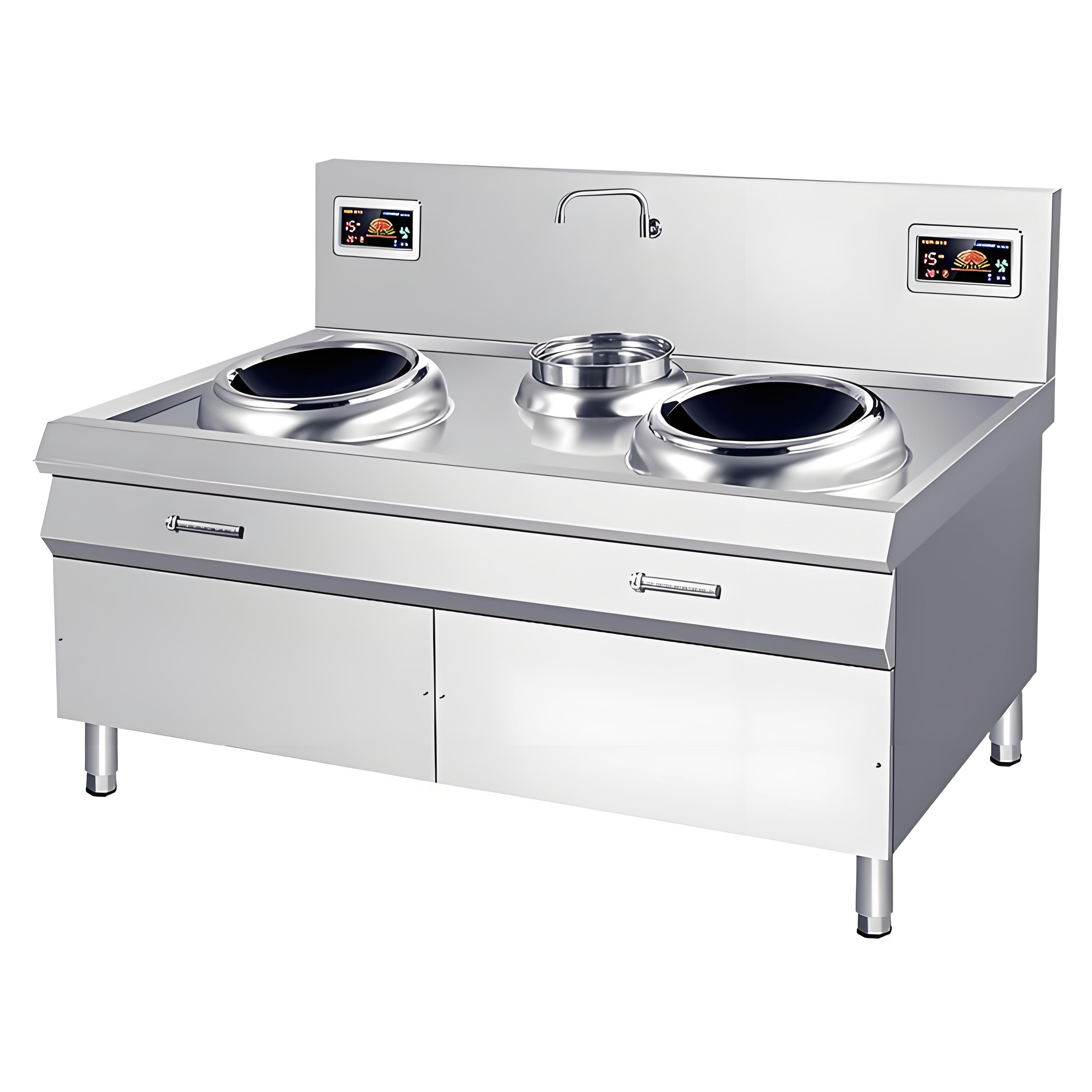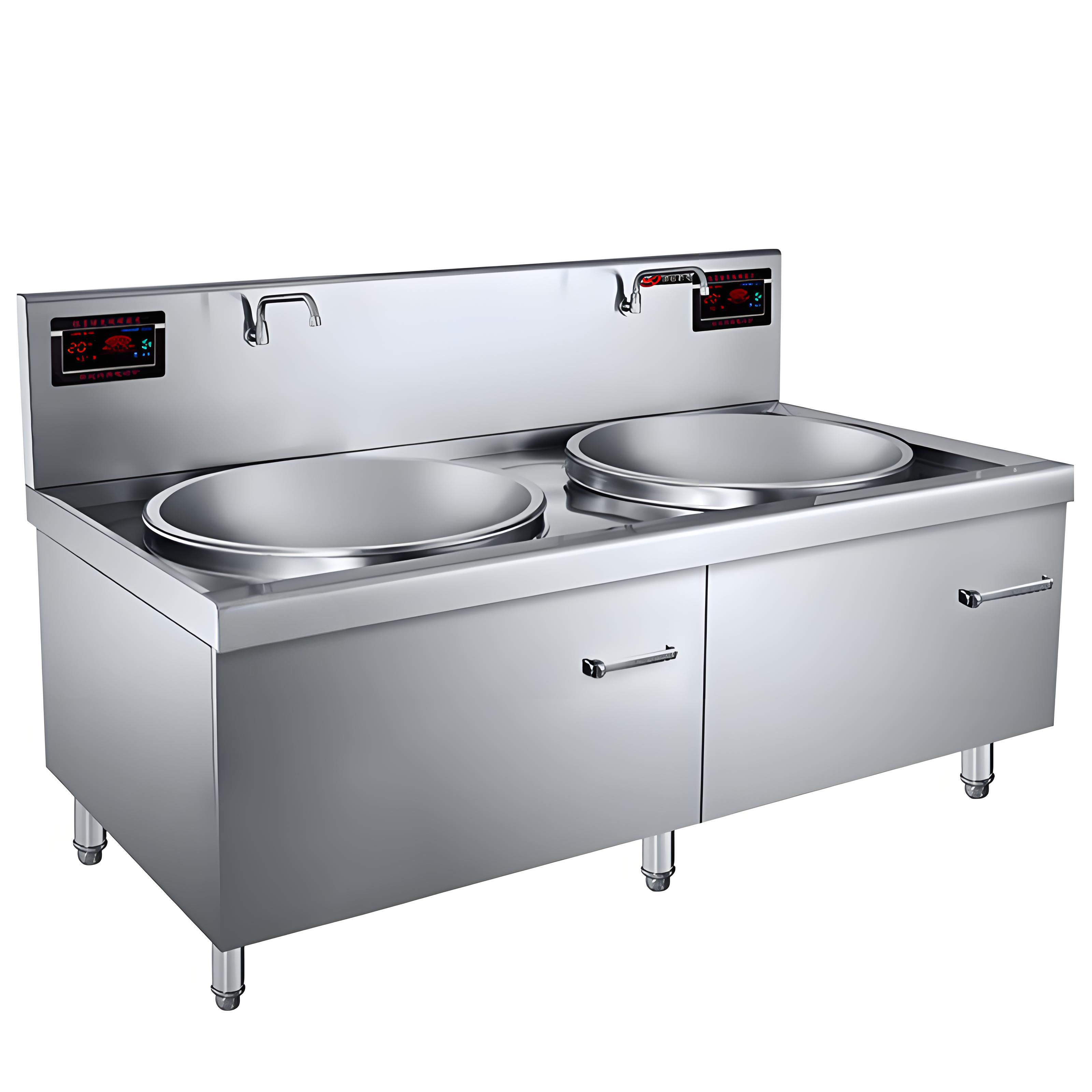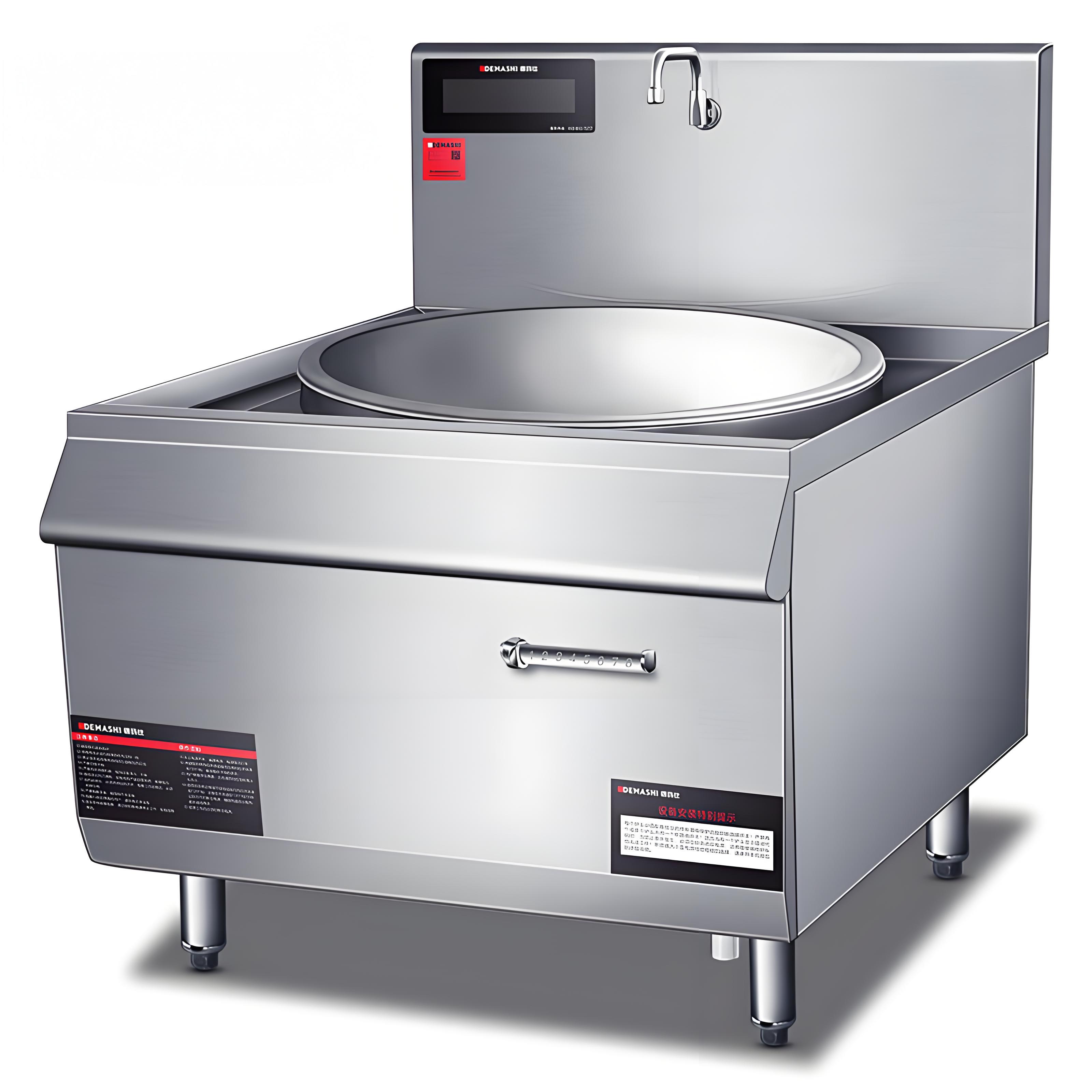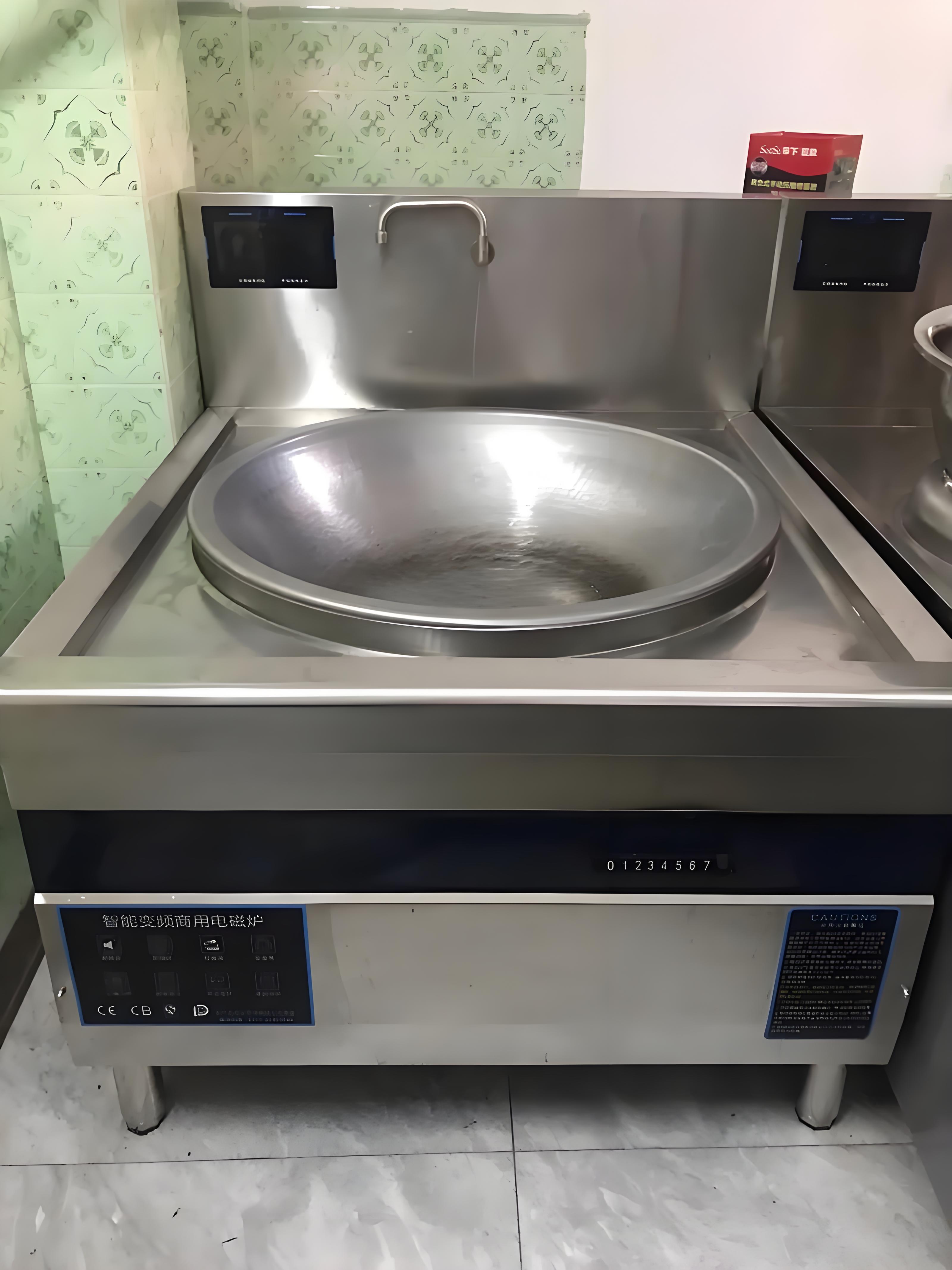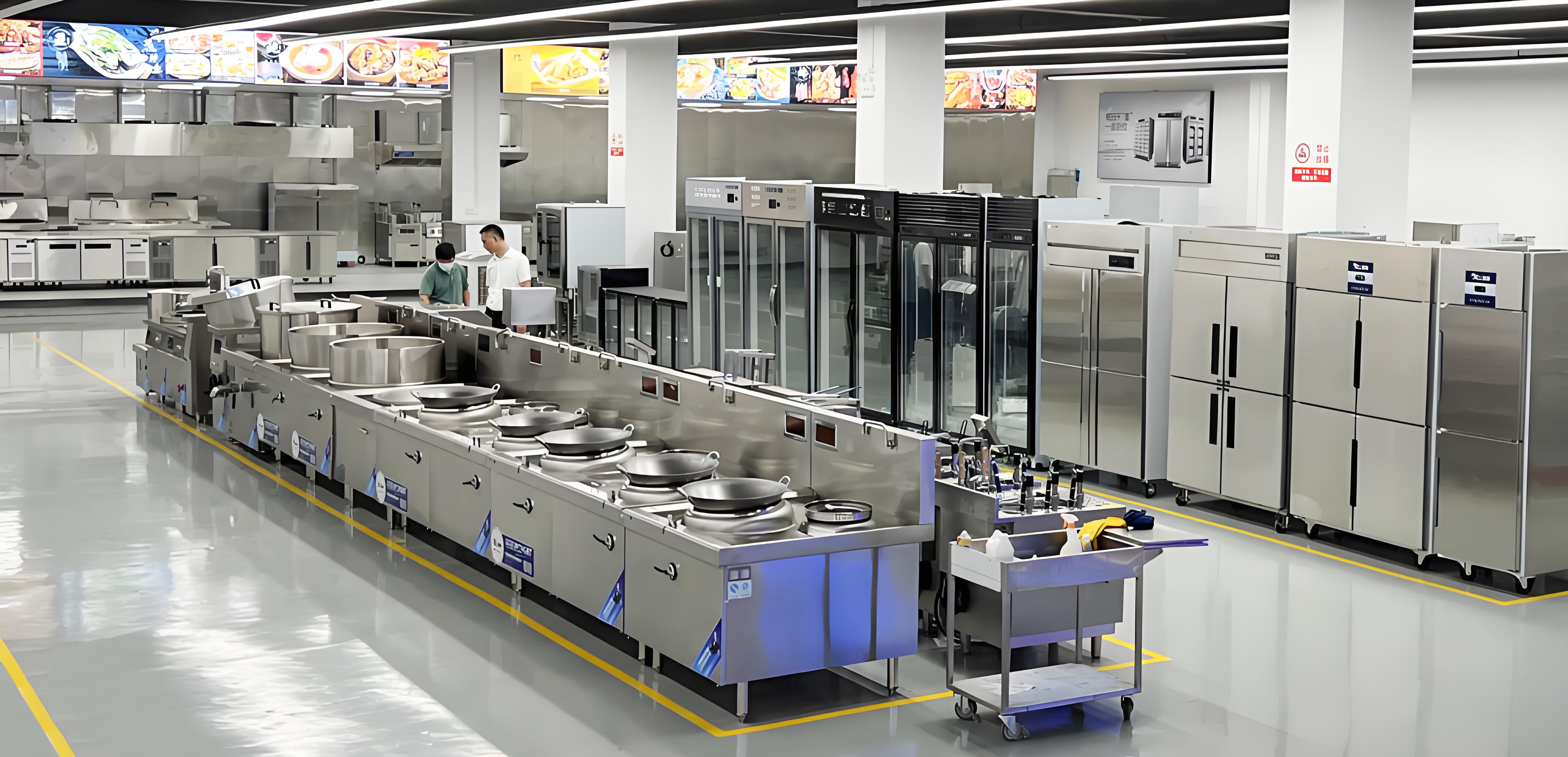As someone who’s spent years in the kitchen equipment industry, I’ve seen firsthand how the choice of materials can make or break a commercial kitchen’s efficiency. One question that often comes up is why stainless steel is the go-to material for commercial induction cookers. It’s not just a random choice—there’s solid reasoning behind it, rooted in science, practicality, and the demands of a bustling kitchen environment. Let me walk you through the reasons, drawing from my experience working with chefs, manufacturers, and kitchen designers, to explain why stainless steel reigns supreme in this context.

The Science Behind Stainless Steel and Induction Cooking
To understand why stainless steel is a favorite, we first need to dive into how induction cooking works. Unlike gas or traditional electric stoves, induction cookers rely on electromagnetic fields to heat cookware directly. A copper coil beneath the cooktop’s surface generates an alternating magnetic field, which induces an electric current in the cookware. This current creates heat through resistance, warming the pan and its contents without heating the cooktop itself. For this to work, the cookware—and often the cooker’s body—must be made of a ferromagnetic material, meaning it contains iron or has magnetic properties.
Stainless steel, particularly grades like 432 or ferritic stainless steel, is highly magnetic, making it ideal for induction cooking. I’ve tested countless cookware sets in commercial kitchens, and those made with magnetic stainless steel consistently outperform others in heat transfer efficiency. Non-magnetic materials like aluminum or copper? They simply won’t work unless they have a magnetic layer, which adds complexity and cost. Stainless steel’s natural compatibility with induction technology is a big reason it’s chosen, but that’s just the start.
Durability That Stands Up to the Grind
In a commercial kitchen, equipment takes a beating. I’ve seen chefs toss pans onto cooktops, spill sauces that would make anyone wince, and crank up the heat to meet tight service deadlines. Stainless steel’s durability is a lifesaver in this chaos. It resists dents, scratches, and corrosion, even when exposed to acidic foods like tomatoes or vinegar-based sauces. Unlike glass or ceramic, which can crack under pressure, stainless steel holds its own against the wear and tear of a busy restaurant.
I once worked with a kitchen manager who swore by stainless steel induction cookers after a cheaper aluminum-based model warped under heavy use. Stainless steel’s ability to withstand high temperatures—often up to 800°F for some grades—means it can handle the intense demands of searing, frying, and boiling without degrading. This durability translates to a longer lifespan, saving businesses from frequent replacements and costly downtime.
Hygiene and Ease of Cleaning
If you’ve ever stepped into a commercial kitchen during a rush, you know spills are inevitable. From splattered grease to boiled-over soups, messes happen fast. Stainless steel’s smooth, non-porous surface makes cleanup a breeze, which is critical for maintaining hygiene standards. Unlike materials like cast iron, which can rust if not properly seasoned, or plastic, which can harbor bacteria in scratches, stainless steel resists staining and bacterial growth. A quick wipe with a damp cloth and some mild detergent is often all it takes to keep it spotless.
I recall a health inspector praising a restaurant I consulted for because their stainless steel induction cookers were so easy to sanitize. The flat, seamless surfaces of these cookers, often paired with glass-ceramic cooking zones, prevent food particles from getting trapped, reducing the risk of cross-contamination. This is especially important in commercial settings where health codes are strict, and downtime for deep cleaning isn’t an option.

Energy Efficiency and Cost Savings
One of the standout benefits of induction cooking is its energy efficiency, and stainless steel plays a key role here. Because it conducts heat evenly and retains it well, stainless steel cookware maximizes the energy transferred from the induction coil to the food. This means less wasted heat compared to gas or electric stoves, where energy can escape into the air. In my experience, restaurants using stainless steel induction cookers often see lower utility bills—sometimes by as much as 30% compared to gas setups.
To illustrate, here’s a comparison of energy efficiency across different cooking methods, based on my observations and industry data:
|
Cooking Method |
Energy Efficiency |
Cookware Material |
Typical Cost Savings |
|---|---|---|---|
|
Induction |
85-90% |
Stainless Steel |
High (up to 30%) |
|
Gas |
40-55% |
Any |
Low |
|
Electric Coil |
65-75% |
Any |
Moderate |
|
Radiant Electric |
70-80% |
Any |
Moderate |
This efficiency isn’t just about saving money—it’s also about speed. Stainless steel’s ability to heat quickly and evenly means dishes are ready faster, which is a game-changer during peak hours. I’ve seen chefs boil water in half the time on a stainless steel induction setup compared to a gas range, thanks to the direct heat transfer.
Aesthetic Appeal and Professional Look
Let’s be honest: looks matter in a commercial kitchen, especially in open-plan restaurants where customers can see the cooking action. Stainless steel’s sleek, polished finish gives induction cookers a modern, professional vibe that elevates the kitchen’s aesthetic. I’ve worked with restaurant owners who chose stainless steel not just for its functionality but because it screams “high-end” to their clientele. It’s no coincidence that top-tier brands like KitchenAid and Whirlpool often use stainless steel for their induction cooktops—it’s a material that exudes quality.
Beyond aesthetics, stainless steel’s reflective surface makes it easier to spot dirt or spills, encouraging staff to keep the kitchen pristine. In contrast, materials like plastic or lower-grade metals can look worn or dated after a few months of heavy use. Stainless steel keeps its shine, reinforcing a kitchen’s reputation for cleanliness and professionalism.
Versatility Across Cooking Needs
Another reason stainless steel is a top choice is its versatility. In commercial kitchens, induction cookers are used for everything from simmering delicate sauces to searing steaks at high temperatures. Stainless steel cookware, especially multi-ply designs with aluminum or copper cores, distributes heat evenly, preventing hot spots that can burn food. I’ve seen chefs rely on stainless steel pans for tasks as varied as braising, boiling, and even oven-finishing dishes, thanks to their oven-safe properties (often up to 550-800°F, depending on the grade).
For example, a 5-ply stainless steel pan I tested in a high-volume catering kitchen had a magnetic stainless steel outer layer, an aluminum core for heat conduction, and another stainless steel layer for durability. This construction allowed it to handle everything from low-and-slow stews to high-heat stir-fries without warping or losing performance. Compare that to aluminum pans, which can warp at high temperatures, or glass, which isn’t induction-compatible at all.
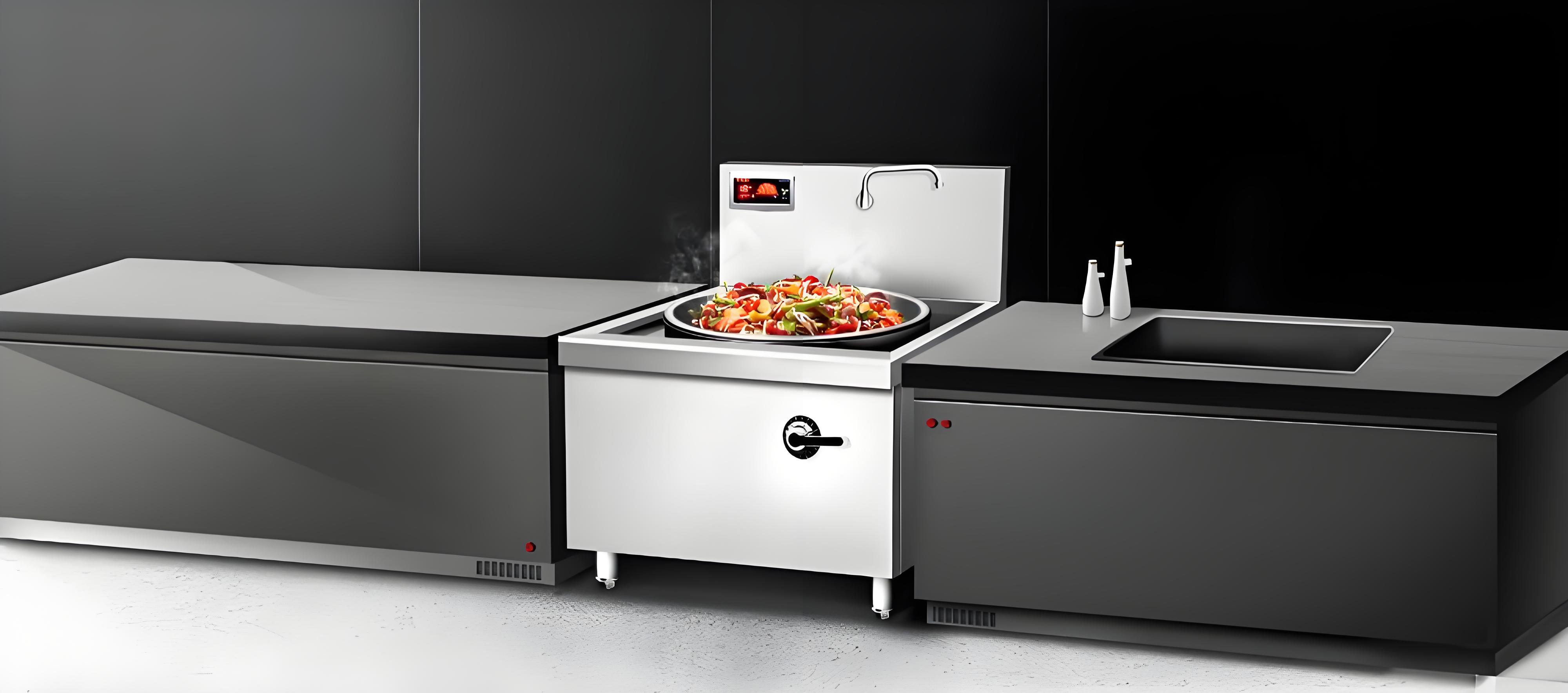
Safety in a High-Pressure Environment
Safety is non-negotiable in commercial kitchens, and stainless steel induction cookers deliver here too. Because induction cooktops only heat the cookware and not the surrounding surface, they stay cool to the touch, reducing burn risks. I once saw a chef accidentally brush against an induction cooktop during a busy service—had it been a gas stove, they’d have been nursing a burn. Stainless steel’s high melting point and resistance to thermal shock mean it can handle rapid temperature changes without cracking or deforming, unlike glass or ceramic alternatives.
Additionally, many stainless steel induction cookers come with automatic shut-off features. If no compatible cookware is detected, the cooker turns off, preventing energy waste and potential accidents. This is a huge plus in a fast-paced kitchen where staff might forget to switch off a burner in the heat of service.
Cost-Effectiveness Over Time
While stainless steel induction cookers might have a higher upfront cost than gas or basic electric models, they’re a long-term investment. Their durability means fewer replacements, and their energy efficiency lowers operating costs. In one restaurant I worked with, switching to stainless steel induction cookers paid for itself within two years through energy savings and reduced maintenance. Plus, stainless steel’s resistance to corrosion and staining means it doesn’t require special coatings or frequent repairs, unlike some other materials.
Here’s a quick breakdown of the long-term cost benefits:
|
Material |
Initial Cost |
Lifespan |
Maintenance Cost |
|---|---|---|---|
|
Stainless Steel |
High |
10-20 years |
Low |
|
Aluminum |
Low |
3-5 years |
Moderate |
|
Cast Iron |
Moderate |
10-15 years |
High (seasoning) |
|
Glass-Ceramic |
Moderate |
5-10 years |
Moderate |
Challenges and Considerations
No material is perfect, and stainless steel has its quirks. For one, not all stainless steel is induction-compatible—grades with high nickel content, like some 200-series alloys, aren’t magnetic and won’t work. I learned this the hard way early in my career when a client bought a set of “stainless steel” pans that wouldn’t heat on their new induction cooktop. Always check for the induction-compatible symbol (a coil or “induction” marking) or test with a magnet to ensure the base is ferromagnetic.
Another consideration is cost. High-quality stainless steel cookware, especially 5-ply or clad designs, can be pricey. However, in my experience, the investment is worth it for commercial kitchens where reliability and performance are critical. Cheaper alternatives, like pans with a single magnetic plate glued to the bottom, often lead to uneven heating and hot spots, which can frustrate chefs and affect food quality.
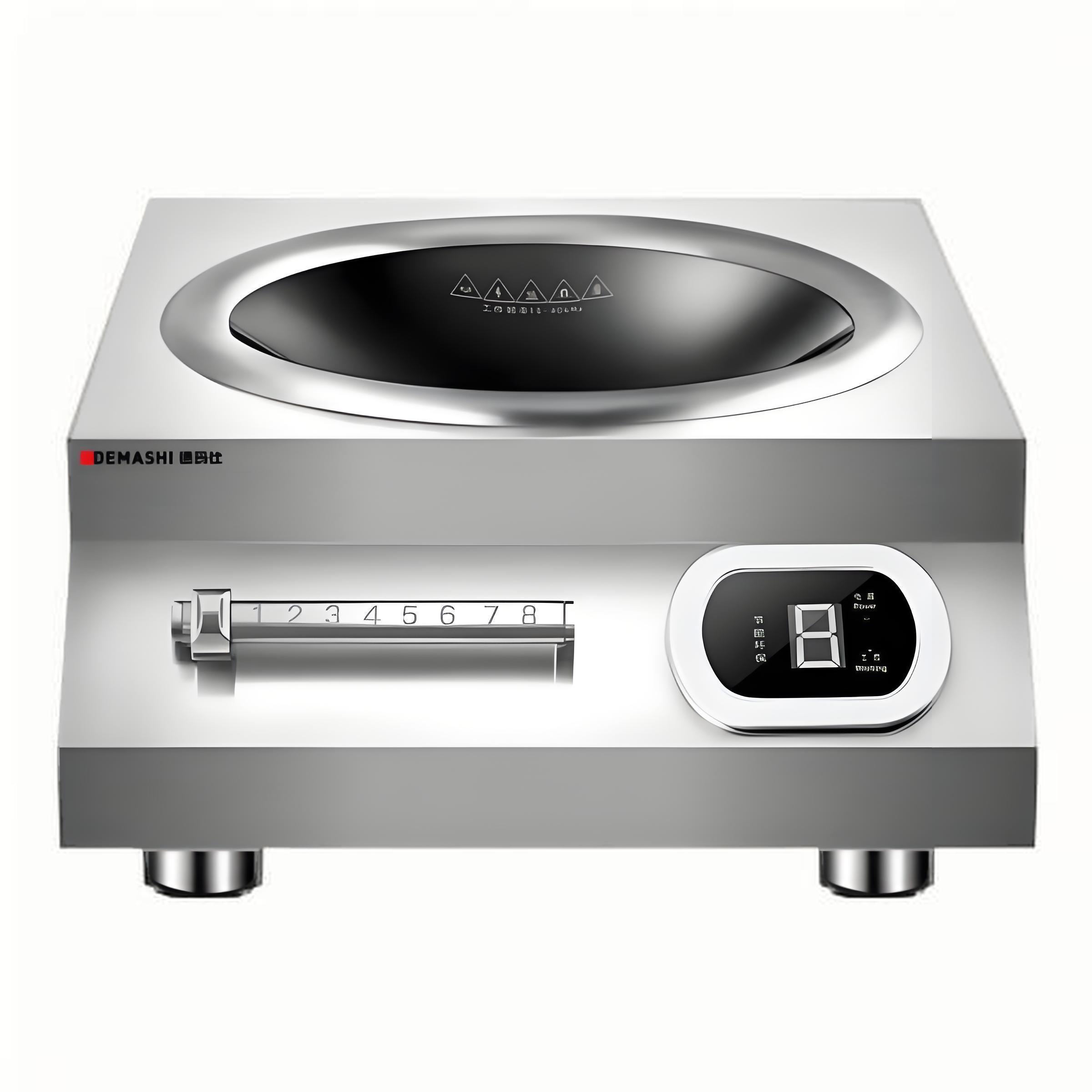
Practical Tips for Choosing Stainless Steel Induction Cookware
Based on years of working with commercial kitchens, here are some tips to ensure you get the most out of stainless steel induction cookers:
Test for Compatibility: Always use a magnet to check if the cookware is magnetic. A strong stick means it’s good to go; a weak one suggests it’s not ideal.
Opt for Multi-Ply: Look for 3- or 5-ply stainless steel cookware with an aluminum or copper core for better heat distribution.
Match Sizes: Ensure the cookware’s base matches the burner’s size for optimal heat transfer. Too small, and the burner won’t activate; too large, and you’ll get uneven heating.
Invest in Quality: Don’t skimp on low-grade stainless steel. Brands like Made In or All-Clad offer durable, induction-optimized options that last.
Clean Regularly: Wipe down the cooker after each use to maintain its shine and hygiene. Avoid abrasive scrubbers to prevent scratches.
Why Stainless Steel Wins in Commercial Kitchens
After years in the industry, I can confidently say that stainless steel’s combination of durability, hygiene, efficiency, and aesthetics makes it the top choice for commercial induction cookers. It’s not just about being induction-compatible—it’s about delivering consistent performance under pressure, keeping kitchens safe, and looking good while doing it. Whether you’re running a high-end restaurant or a busy catering operation, stainless steel induction cookers are built to handle the heat (pun intended).
The next time you’re outfitting a kitchen or upgrading your equipment, consider the long-term benefits of stainless steel. It’s an investment that pays off in efficiency, reliability, and peace of mind. And if you’re ever in doubt about a pan’s compatibility, just grab a fridge magnet—it’s the quickest trick in the book.
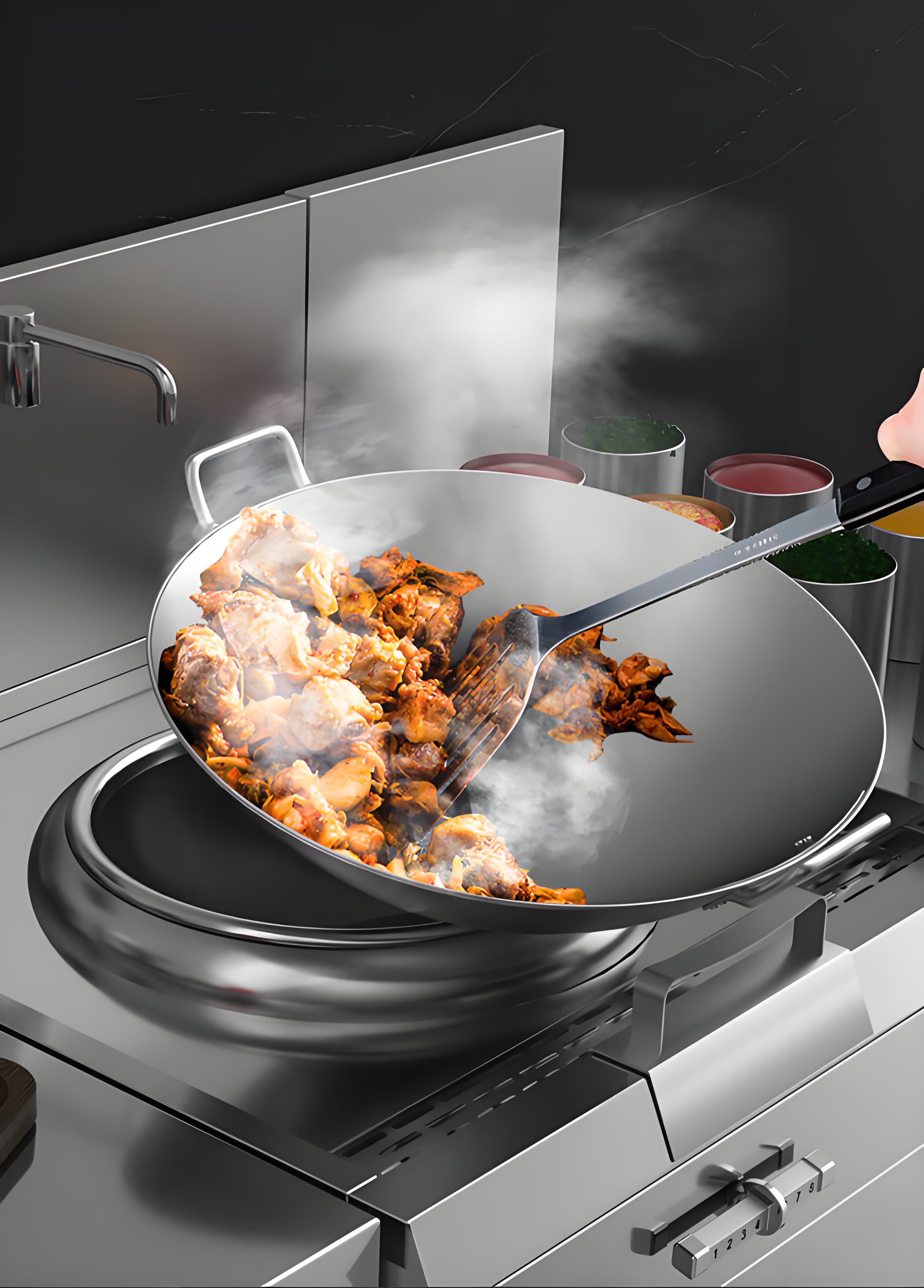
Frequently Asked Questions
Q: Can all stainless steel cookware be used on induction cookers?
A: Not all stainless steel is induction-compatible. Only grades with ferromagnetic properties, like 432 or ferritic stainless steel, work. Test with a magnet—if it sticks strongly, the cookware is suitable. High-nickel stainless steel, like some 200-series alloys, won’t work because it blocks the magnetic field.
Q: Why is stainless steel more expensive than other materials for induction cookers?
A: Stainless steel’s higher cost comes from its durability, corrosion resistance, and often multi-ply construction, which includes layers like aluminum or copper for better heat conduction. These qualities ensure long-term performance, making it a worthwhile investment for commercial kitchens.
Q: How do I maintain a stainless steel induction cooker?
A: Clean it regularly with a damp cloth and mild detergent to remove spills and grease. Avoid abrasive scrubbers to prevent scratches. For stubborn stains, use a stainless steel cleaner. Always ensure the cookware is induction-compatible to avoid damaging the cooker’s surface.
Q: Are there any downsides to using stainless steel induction cookers?
A: The main downsides are the higher initial cost and the need for compatible cookware. Some stainless steel grades aren’t magnetic, which can cause confusion. Additionally, low-quality stainless steel pans may lead to uneven heating, so investing in high-quality options is key.
Q: Can I use non-stainless steel cookware on an induction cooker?
A: Yes, but only if it’s ferromagnetic, like cast iron or carbon steel. Non-magnetic materials like aluminum, copper, or glass won’t work unless they have a magnetic base. Always check for induction compatibility to ensure proper performance.
